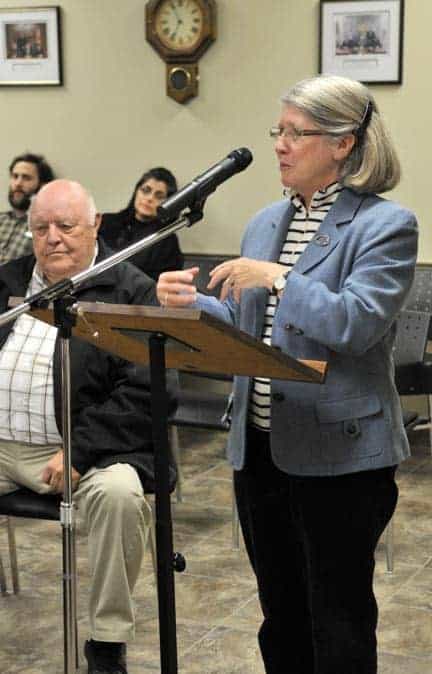Reversing course from last week, Woolwich council will hit residents for a one per cent infrastructure levy in 2014, bringing the projected tax increase to 2.5 per cent.
Meeting Tuesday night, councillors scrapped the idea of drawing the equivalent of a 1.5 per cent levy from an investment windfall. Instead, the township will continue a plan adopted last year to extract more money to upgrade crumbling roads and bridges.
The motion put forward by Coun. Mark Bauman calls for the expected $320,000 windfall from the township’s stake in Waterloo North Hydro to be allocated during upcoming budget discussions
He was quickly supported by Coun. Julie-Anne Herteis, who argued in favour of maintaining the levy rather than leaving a more difficult situation for the next council.
Addressing councillors earlier in the meeting, West Montrose resident Tony Dowling called for the reinstatement of the levy rather than providing a tax holiday in 2014.
“The reason we’re in this situation is that taxpayers have had a vacation in infrastructure for 20 or 30 years,” he said, noting even the hydro windfall amounts to a “drop in the bucket” with an infrastructure deficit of more than $60 million.
The one per cent levy adds another $6.29 to the to the township portion of the tax bill, based on a home at the average assessed value of $269,000. That would bring in an extra $82,000. The already-agreed on 1.5 per cent tax increase amounts to $9.44 per year, a total of $123,000 for township coffers.
Bauman said he wants to see the hydro windfall money assigned to infrastructure or special projects such as a skateboard park, not simply rolled into normal spending.
On the operations side, the 1.5 per cent tax hike would cover the basic cost increases, including a 1.5 per cent boost in payroll costs, making up about half the budget. While changing course on the infrastructure levy, council maintained the framework approved last week that aims to use all of this year’s services as the baseline for 2014, with no discussion of evaluating programs for efficacy or reducing unnecessary spending to provide year-over-year funding for infrastructure.
Where the township has benefited financially from strong assessment growth in recent years, slower development is expected to drop that increase to 1.5 per cent, or about $123,000 in additional revenue. By comparison, growth this year hit 4.5 per cent, bringing in another $350,000.









